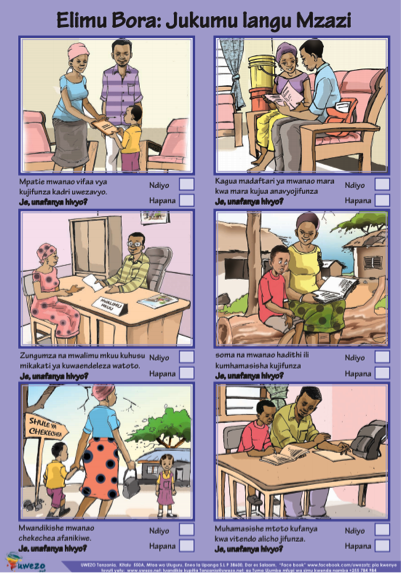Communities Improving Literacy in Africa
September 8th was International Literacy Day. The day passed fairly quietly, but it shouldn’t. Literacy is one of the most important building blocks for a child’s path out of poverty. Literacy in its most simple definition is the ability to read and write, but with the long-term goal of using this ability to learn.
 Often, the discussion around education in Africa is focused on getting children into school. Child sponsorship programs are in abundance across the continent and are attractive to donors looking for a convenient way to support disadvantaged children on the other side of the world. The programs work. In fact, between 2010 and 2012, 50 million more children have entered the classroom across sub-Saharan Africa according to the UNESCO Education for All Monitoring Report, 2012.
Often, the discussion around education in Africa is focused on getting children into school. Child sponsorship programs are in abundance across the continent and are attractive to donors looking for a convenient way to support disadvantaged children on the other side of the world. The programs work. In fact, between 2010 and 2012, 50 million more children have entered the classroom across sub-Saharan Africa according to the UNESCO Education for All Monitoring Report, 2012.
However, the work doesn’t end there. Providing access to education has been a major focus of non-profit organizations and donors alike. At its core is a belief that sending children to school will give them the knowledge necessary to grow into thriving adults. The problem remains, however, that while a child may be in school with the necessary uniform and materials and a regular seat at a desk (if they’re lucky), it does not mean that the child is actually learning.
Children cannot benefit fully from being in school if they live in poverty, are malnourished, don’t have access to a skilled teacher, or are in a classroom with upwards of over 100 pupils. Studies have shown that children in poverty score lower on standardized tests, and perform worse in school, at all ages compared to children not in poverty. On average, children from poor households are at a learning disadvantage of about two years behind their counterparts from non-poor households according to the Uwezo 2012 East Africa Report. The reasons for this are varied, from not having the ability to study outside of the classroom because children need to earn an income for the family, to having limited access to scholastic materials, textbooks, or adequate lighting in the home to finish homework at night.
If children are not able to learn the fundamentals of reading and writing, they will face an uphill battle later in life and are more likely to be stuck in the cycle of poverty. This is why so many of our partners prioritize education and learning as a key part of their programming.
We’ve seen that our partners tend to focus on three things when improving learning outcomes:
1) Offering Diverse Programs for Children
Inside the classroom: Some are working with teachers to improve instruction skills in the 3Rs (reading, writing, arithmetic). Some are incorporating elements of play into lesson plans to respond to a child’s needs for tactile learning. Others engage with school administrators to make schools safe spaces for all children.
Outside the classroom: Emotional needs are addressed by organizations providing home visits where counseling with children and families takes place. Often some of the most vulnerable children come from fragmented homes where they are at-risk for living on the street. Providing home support visits can mitigate these risks before children are put in a position of vacating the home.
2) Involving Parents
As parents become more involved in supporting their child to learn, whether it is responding to SMS messages on strategies to engage with children in the home, it improves parent’s understanding of the needs of their children and provides ideas for how parents can support their children to learn. Others work with parents around their ability to respond to children with compassion and kindness, or with families around organic farming in order to provide nutritious meals to children before they go off to school each day.
Learn more about the use of SMS messaging in community-based work in Africa in this previous blog post: Cell Phones Help Reach Community Members in Africa.
3) Evaluation of Learning Outcomes
Measuring success and impact can be tricky. Whereas measuring school attendance and materials can be easy, how do you measure quality learning?
Three Firelight partners in Tanzania are answering that question with a tool designed by Uwezo, an east African organization dedicated to improving basic competencies in children ages 6-16. The Uwezo assessment teaches volunteers to answer the question, “are our children learning?” After minimal training, community volunteers use a survey tool to measure levels of literacy and numeracy.
Here’s a sample of the Uwezo Assessment:
By measuring the impact of their programs, these partners will have a better idea if their work with children in both early childhood and primary school years has indeed improved their learning and prepared them to graduate with the ability to read and write as well as perform basic math. These skills create the foundation for critical thinking, curiosity, listening, and the ability to communicate and ask questions.
There are many communities making great changes in children’s education in sub-Saharan Africa.
Read previous education blogs here:
Beyond the Classroom Brining Education Closer to Home It Takes A Community



